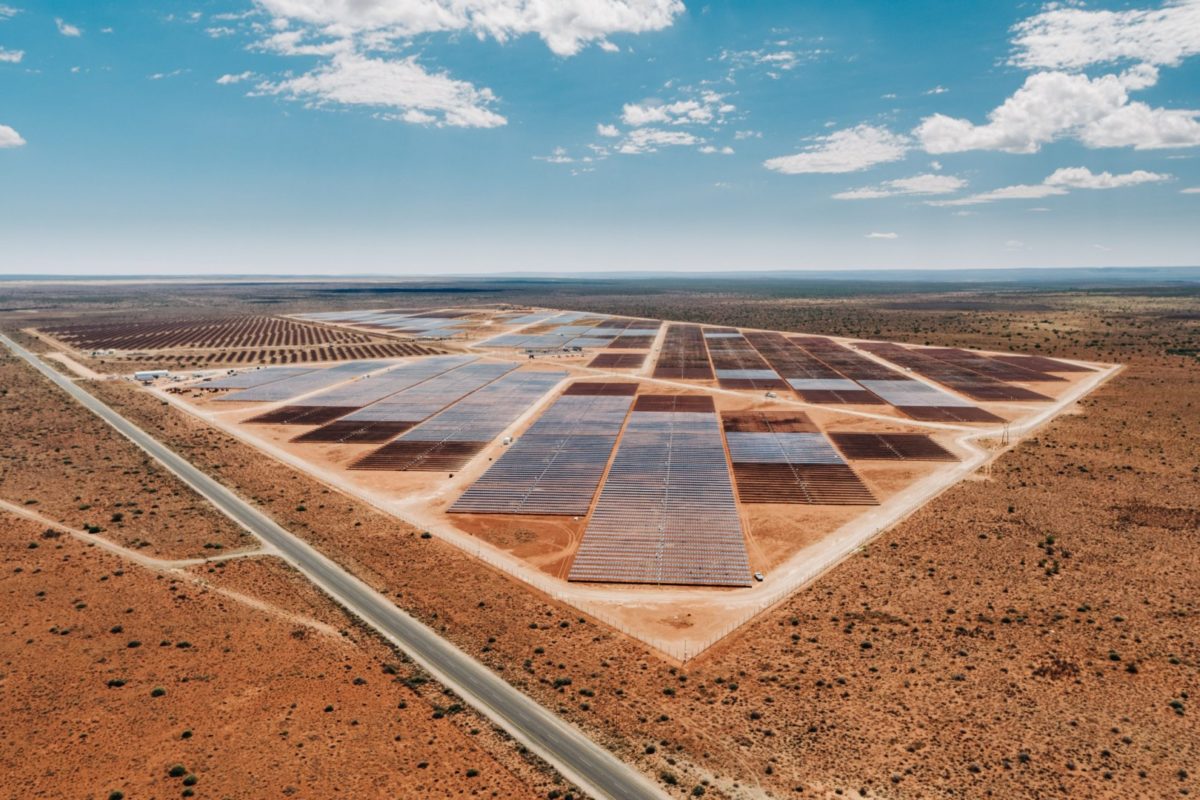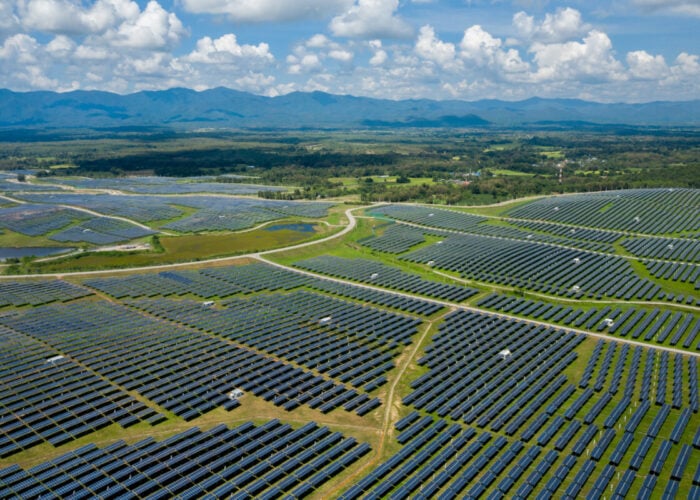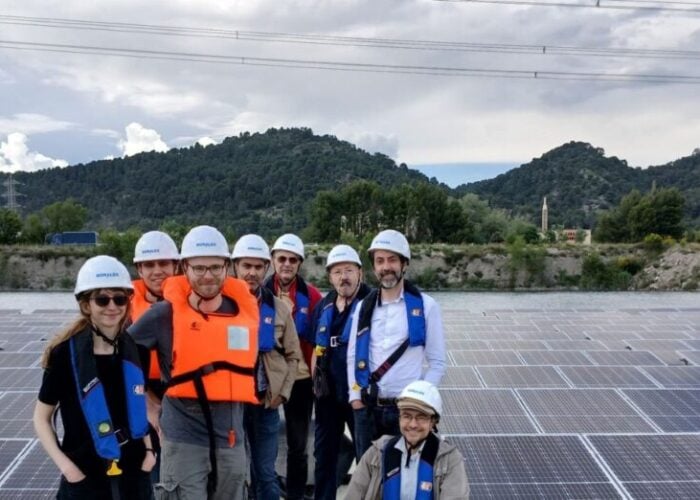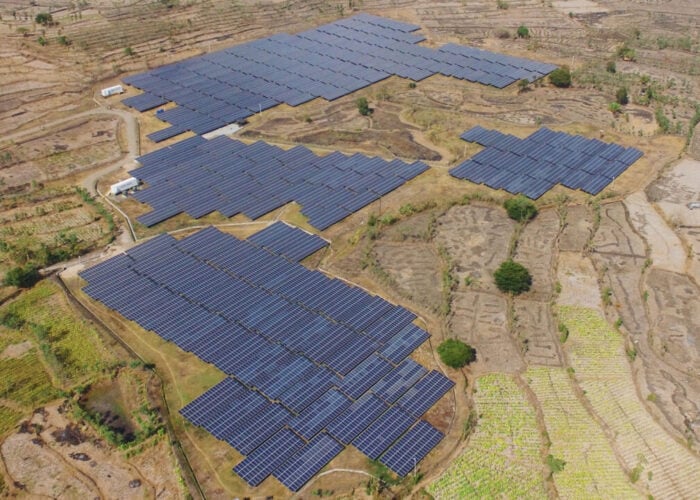
Ahead of the Solar Finance and Investment Europe conference this week, organised by PV Tech publisher Solar Media, Gransolar Group managing partner and co-founder Ivan Higueras spoke to PV Tech about how utility-scale solar development has changed in recent years and the prominent role vanadium redox flow batteries could play in the future.
Unlock unlimited access for 12 whole months of distinctive global analysis
Photovoltaics International is now included.
- Regular insight and analysis of the industry’s biggest developments
- In-depth interviews with the industry’s leading figures
- Unlimited digital access to the PV Tech Power journal catalogue
- Unlimited digital access to the Photovoltaics International journal catalogue
- Access to more than 1,000 technical papers
- Discounts on Solar Media’s portfolio of events, in-person and virtual
PV Tech: What are some of the benefits you can deliver customers or investors as a vertically-integrated provider?
Ivan Higueras: Vertical integration allows us to be a ‘one-stop-shop’ for our customers while being cost competitive and assuring quality. When our engineering teams design a solar plant, they know how our construction and installation teams are organised; our tracker installation supervisors have worked dozens of times with our construction managers. It´s not that they don´t have problems or difficulties, it´s just that they´ve faced those problems before and have worked out have to overcome them.
This means that they can work more quickly, and it means they have a closer handle on the details of the installation and build process. This understanding and experience between different elements involved in the process goes far beyond just tracker installation.
We have our own SCADA system that we developed from scratch and which we have installed on multiple plants, and that makes its integration and configuration quicker and more assured. We operate many of the plants that we have built so we know where problems can arise over time, and that feeds back into the design and construction process. We handle all our own purchasing and logistics and that means we can manage delivery times and replacement parts better. Each one of these many interfaces give a small gain in time or efficiency, but together they all add up to more controlled process and that translates into cost competitiveness and quality for the client.
In addition to that, the fact that within our Group we have a project development platform that is active in some key markets allows us to offer our customers not only investment opportunities of solar and storage projects, but also to put at their disposal a deep understanding of the market status, challenges and regulation to support them during the development, execution and operation of their assets.
How are the needs of solar investors changing as the market matures?
A few years ago, most of the investors in utility-scale solar were utilities, energy companies or infrastructure funds. Those participants are still there but now as lenders have become more comfortable with the technology and solar PV has become a more mature asset class, we are seeing institutional investors, pension funds, non-specialist investment funds, and even local administrations enter the market.
This new group of investors many times has financial knowledge or a clear idea of what they want from a solar plant, but perhaps less understanding about the developmental, technical, or operational side of the business, and don´t have the industry contacts that the specialists have. These investors are looking how to participate in solar assets with the least amount of complication and lowest risk possible, and they are more attracted to one-stop-shop providers. They also tend to be more conscious of quality as they generally hold onto the asset for its whole lifetime.
Given Gransolar’s level of experience in the sector, what are some of the biggest changes you have seen regarding development of large-scale solar in Europe in recent years, and how have they impacted on system design and development?
I think the biggest change we have seen in recent times is the move away from subsidised solar towards a merchant model where the revenues that solar projects can hope to achieve are not guaranteed and are more exposed to the market. This market exposure together with increased competition have put huge pressure on all parts of the solar industry with investors wanting and needing more output from a solar plant for less cost, and lower profit margins are not enough to get us there.
Every part of the industry has had to adapt and innovate to meet this demand, right from the development and connection cost structure during the initiation stages, to value-oriented engineering and the use of new technology. In a really short time bifacial modules have become almost standard; tracker technology – which was once just steel in the ground – now uses AI and machine learning algorithms to optimise production. Construction is leaner and strong logistic capabilities have become critical.
Finally, we´ve also seen operation and maintenance costs plummet and the emergence of cleaning robots and much more sophisticated monitoring of plant performance. If you look at all these elements and try to bring them together in the shortest possible timeframe, with the highest output and for the lowest cost, you quickly come to the conclusion that as many as possible of these processes need to be integrated and coordinated to guarantee success. This is what Gransolar Group can offer, by having so many of these capabilities under one roof; development, construction, engineering, equipment and O&M.
How is the utility-scale solar market’s relationship with energy storage evolving? Is co-location of the two technologies increasing?
Most of us in the renewable energy sector always believed that batteries were the key to unlocking the full potential of solar power, and other technologies; it was just a question of when the price of energy storage would make storage, or solar-plus-storage projects commercially viable.
For some applications and regions there is clearly already a commercial business case for battery applications, but in others, without legislated support from government the numbers aren´t there yet, as we have seen recently in the Spanish government renewable tender where none of the bidders included storage. I think the critical issue is to allow batteries to participate in as many markets as possible, on a commercial basis. This allows them to stack potential revenues and complete where they can be most effective. The number of solar-plus-storage projects in the market is definitely increasing and we are also seeing investors future-proofing their solar plants so that even if they don´t include batteries now, they are ready to retrofit storage capacity further down the road.
At Gransolar we always believed in the potential of energy storage, that is why we invested in building up our technical capabilities and commercial knowledge. Four years ago, we started developing a vanadium redox flow battery, which is the most practical and cost-effective storage technology for six-hour plus discharge capabilities. Effectively you can have 24-hour electricity for 20 years with minimum maintenance and degradation. We expect to see a boom in the adoption of this technology hybridised with solar in the coming years.
We see also storage as a mitigator of solar assets devaluation risk. Even if wholesale margins keep merchant projects viable in the longer term, markets with high solar penetration might experience a decline in both energy prices and the value of solar assets. We see some major developers are anticipating this value destruction in the long run and have started to mitigate the risk by adding storage to their pipelines to diversify their risk. We ourselves have started developing a solid storage pipeline in Australia, Spain, the UK and United States to be ready to support our investors.







